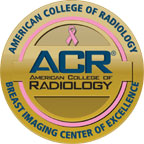Today’s blog is about Contrast-Enhanced Spectral Mammography (CESM), a powerful new tool we are using to diagnose potential breast cancer. As we’ve mentioned in previous posts, RMI is pleased to offer 3D mammography (tomosynthesis) at our locations in Flint and Novi. Those same machines can be used for CESM, which is a diagnostic exam.
As a reminder, a screening exam is used to spot potential areas of concern in the breast. A diagnostic exam, in this case, is used when something is seen that is of concern. It is a more comprehensive imaging exam designed to determine if there is actual cancer and what its characteristics may be. Your doctor and our radiologist will determine if CESM is applicable to you.
How CESM works
CESM is a 2D mammogram that uses an injection of iodinated contrast
(similar to CAT). It’s used if you’ve had an inconclusive mammogram or an
abnormal ultrasound. It provides significantly clearer images of the inside of the breast to help our radiologists better determine what is going on. Like 3D mammography, it is especially useful for patients at high risk or with dense breast tissue.
The exam takes around seven minutes, and due to its precision reduces fall-positive results and thus unnecessary return visits for exams.
What Does It Mean for Me?
As a patient, you want the best healthcare for your dollar. It is part of our core business belief to utilize the latest technology, processes, and methodologies to provide the most accurate and comprehensive medical imaging. Within the industry, radiologists are often referred to as the “doctor’s doctor,” as it is our job to provide your PCP critical information. With the reports and images we generate, they can make the critical decisions necessary for your healthcare.
Our acquisition of the new Senographe Pristina machines manufactured by General Electric is one example of how we meet our core belief. Being able to provide 3D mammograms and CESM means you and your doctor get the latest imaging technology.

